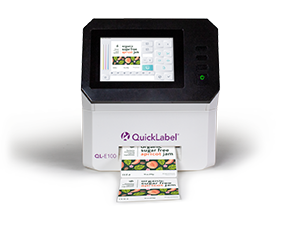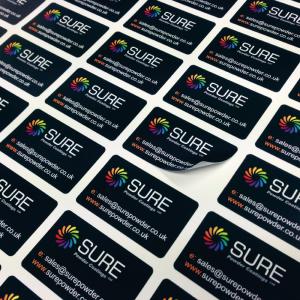Discover the Versatility of Full-Colour Labels: Types and Makes Use Of for Your Business Demands
In today's competitive market, full-colour labels provide a compelling way for businesses to differentiate their items. These versatile devices, offered in numerous types, lend themselves to varied applications-- from improving item recognition to connecting important details and strengthening brand name identification. As we check out much deeper right into the realm of full-colour tags, you will find their possible to develop long lasting impressions and drive customer engagement.
Understanding the Fundamentals of Full-Colour Labels
While it might appear straightforward externally, the process of making and printing full-colour tags requires a solid understanding of particular vital concepts. The very first step while doing so is to recognize the shade version used in printing, which is typically the CMYK (Cyan, Magenta, Yellow, and Trick or Black) This model mixes these four colors to generate a vast array of shades, which are critical in recording the visual essence of a brand.
The next principle includes resolution. The clarity of the label's image and text depends on the resolution, normally measured in dots per inch (DPI) The greater the DPI, the far better the print top quality.
Finally, the selection of substratum, or product on which the label is printed, substantially impacts the final product. Various materials soak up ink differently, affecting the vibrancy and longevity of the label. Comprehending these principles can help businesses produce reliable, top notch full-colour tags.
Exploring the Various Sorts Of Full-Colour Labels
Progressing, the emphasis shifts to the varied range of full-colour labels available in today's market. This selection not just differs in type and material but also in their details applications in various company sectors. Recognizing these variants can considerably improve the efficiency of their usage, consequently enhancing organization procedures.
Full-Colour Label Varieties
Diving into the globe of full-colour tags, one uncovers a varied selection of kinds, each offering distinct advantages. These include vinyl tags, recognized for their durability and water resistance, excellent for products exposed to rough conditions. Polyester labels, on the other hand, are heat and chemical immune, making them suitable for digital devices or lab equipment. For a much more all-natural appeal, paper-based labels are used, understood for their printability and cost-effectiveness. Glossy labels offer an eye-catching shine, improving the colour vibrancy and making the product attract attention. Lastly, clear labels provide a minimal, modern look, letting the item radiate through. Each type accommodates different company demands, providing flexibility and capability in branding and item identification.

Practical Company Applications
In the world of organization, full-colour labels find myriad functional applications. They are instrumental in item recognition, providing a visually enticing way to convey important info. This includes product specs, branding elements, and usage directions. Companies in the food and drink industry, for example, make use of these labels to connect nutritional realities, components and expiry days. In retail, vibrant tags improve item visual, draw in consumer attention and assist in decision-making.
Additionally, full-colour labels serve as advertising and marketing tools, enhancing brand identification and improving presence in jampacked industries. They can likewise be used in operational tasks, helping in stock control and process organization. Seemingly, the flexible nature of full-colour labels makes them indispensable in varied organization contexts.
Benefits of Utilizing Full-Colour Labels for Your Business
Taking advantage of the power of full-colour tags can considerably boost a business's brand image. blank labels. These labels supply an aesthetically impactful and very reliable way to communicate the essence of a brand name, making it much more memorable and tempting to customers. They draw interest to products, making them stick out on store shelves amidst a sea of rivals
Full-colour tags also make it possible for services to share thorough details in an aesthetically attractive manner. From ingredient listings to usage instructions, the dynamic colours and high-resolution printing ability of these labels make certain that every piece of information is plainly visible and quickly understandable.
Moreover, full-colour labels use a level of personalization that is unmatched. Companies can utilize this to show their special brand name character and worths, promoting a much deeper link with their target market. In essence, full-colour tags are not simply marketing devices however additionally powerful branding assets that can significantly add to an organization's success.
Practical Applications of Full-Colour Labels in Various Industries
The usefulness of full-colour tags encompasses countless industries, each utilizing their potential in one-of-a-kind means. From boosting retail product presence to their important role in food product packaging, these labels confirm important. Even in the automotive market, full-colour labels locate considerable utility, demonstrating their wide industrial applicability.
Enhancing Retail Product Visibility
While several companies grapple with the challenge of making their items stick out on jampacked retail racks, full-colour labels supply an efficient service. Beyond merely sharing product information, these labels function as aesthetic magnets that bring in and captivate consumers. Retail markets, from style to electronic devices, can utilize such tags to distinguish their products and enhance exposure. Full-colour tags, with their vibrant hues and crisp graphics, can reflect brand name identity, underscoring the distinct selling recommendation. They can likewise spotlight vital product features, motivating impulsive purchase choices. Additionally, full-colour labels can be used for marketing objectives, highlighting price cuts or special deals. In this visually-driven retail environment, full-colour labels serve as quiet yet convincing salespersons, guiding customer interest and affecting purchasing behaviour.
Tags in Food Product Packaging
In the world of food packaging, full-colour labels have actually sculpted a web niche for themselves due to their useful and visual charm. From little artisanal producers to large multinational companies, businesses take advantage of the possibility of full-colour labels in food product packaging to interact their brand worths and enhance their product's marketability. Therefore, full-colour labels play an essential duty in food More about the author product packaging, bridging the void in between practical need and advertising technique.
Automotive Industry Tag Uses

From an advertising point of view, automobile services make use of full-colour tags to boost brand acknowledgment and convey item information. They can be found on item packaging, sales brochures, and auto-parts, giving vital information concerning the item. Whether it's the logo on an automobile's bumper or the solution guidelines inside the hood, full-colour tags provide an aesthetic allure that improves client experience, eventually cultivating brand name commitment. Therefore, their role in the auto market is both useful and advertising.

Steps to Style Effective Full-Colour Labels
Crafting efficient full-colour labels needs a strategic strategy. The layout process starts with a clear understanding of the brand message and target audience. Knowing what appeals to the target market influences the selection of colours and graphics made use of.
Next, think about the item. The tag requires to match the item yet also stand apart sufficient to draw in attention. Balance is essential below; an overly intricate design can confuse and prevent prospective consumers, while a too simplified design might not effectively connect the brand's quality.
Typography also plays a crucial role. Choose fonts that are readable, also at small dimensions, and that align with the brand name's individuality.
Ultimately, make certain the label's info is accurate and compliant with regulations (barcode printers). This includes necessary details like components or instructions, however additionally branding components like logos and taglines
Properly created full-colour labels can dramatically boost a product's bankability, making them a vital device for companies.
Case Studies: Successful Brand Names Using Full-Colour Labels
While there are plenty of brands making use of full-colour tags, a few attract attention for their phenomenal design and tactical use. Coca-Cola, as an example, has actually long basics been recognized for their vivid red tags, which immediately attract the eye and make their item conveniently identifiable. Their use full-colour labels not only improves their branding yet additionally charms to customers' feelings, producing a sense of familiarity and trust fund.
Likewise, M&M's uses full-colour tags to separate their item versions. Their strong and bright labels are not just aesthetically pleasing yet additionally offer a useful function, allowing consumers to easily compare various flavors.
Finally, the craft beer market, particularly brands like Brewdog and Rock Brewing, heavily rely upon full-colour tags. These brands utilize the innovative capacity of full-colour tags to convey their distinct brand identifications, attracting attention in a jampacked market. These instances exemplify just how full-colour tags can be strategically utilized to improve brand acknowledgment and consumer allure.
Verdict
Finally, full-colour labels are functional devices that accommodate a vast array of organization requirements. They not just boost item identification and share vital details but additionally amplify brand name recognition. The range of kinds, from durable plastic to clear tags, use choices for varied applications. With effective style, these tags can significantly affect customer focus and add to brand name identification, as confirmed by a number of successful brand names. Understanding their potential can transform your company approach.